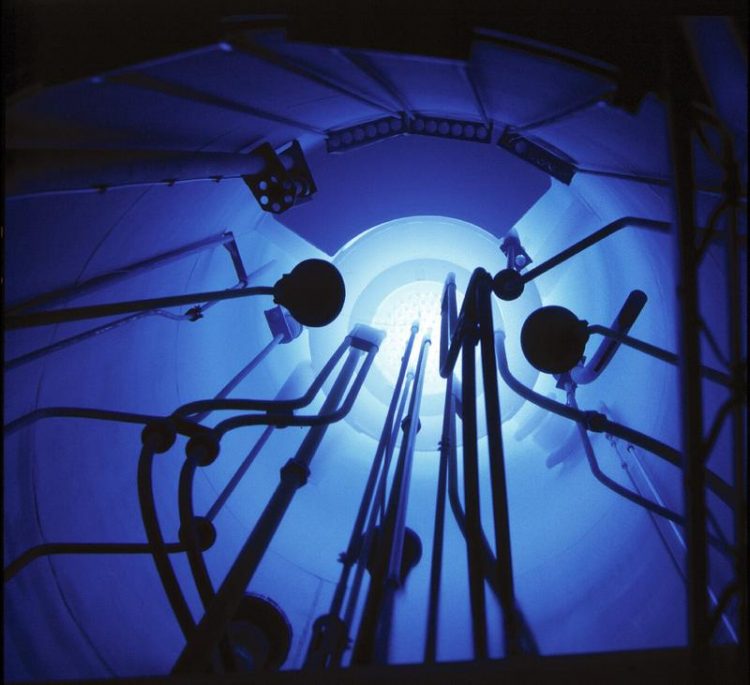TRIGA Mainz reaches world record of 20,000 pulses in 50 years

Pulse operation with the characteristic blue Cherenkov radiation at TRIGA Mainz Thomas Hartmann, JGU
The research reactor TRIGA at Johannes Gutenberg University Mainz (JGU) has reached a new milestone: after 50 years of consecutive operation, TRIGA Mainz achieved a total number of 20,000 pulses on October 1, 2015 – a world record.
On this day, the reactor was operated for test measurements of neutron detectors that will be used at the source for ultracold neutrons as part of the user facility at the PRISMA Cluster of Excellence at Mainz University.
TRIGA Mainz has a powerful neutron source, which is used by chemists and physicists from all over the world for fundamental research.
It can be operated in the steady-state mode with a maximum thermal power of 100 kilowatt or in the pulsed mode with a maximum thermal power of 250,000 kilowatt, released within 30 milliseconds. This produces the characteristic blue glow of underwater Cherenkov radiation, which was emitted during 20,000 pulses in the TRIGA reactor pool.
According to General Atomic, the company that developed the TRIGA reactor concept, no other TRIGA reactor was pulsed more often.
The International Atomic Energy Agency (IAEO) currently counts 35 running TRIGA reactors in 16 countries, 20 of these reactors can be pulsed.
Weitere Informationen:
http://www.uni-mainz.de/presse/19616_ENG_HTML.php – press release ;
http://www.kernchemie.uni-mainz.de/eng/234.php – TRIGA Mainz ;
http://www.kernchemie.uni-mainz.de/eng/index.php – Institute of Nuclear Chemistry at Mainz University
Media Contact
All latest news from the category: Physics and Astronomy
This area deals with the fundamental laws and building blocks of nature and how they interact, the properties and the behavior of matter, and research into space and time and their structures.
innovations-report provides in-depth reports and articles on subjects such as astrophysics, laser technologies, nuclear, quantum, particle and solid-state physics, nanotechnologies, planetary research and findings (Mars, Venus) and developments related to the Hubble Telescope.
Newest articles

Silicon Carbide Innovation Alliance to drive industrial-scale semiconductor work
Known for its ability to withstand extreme environments and high voltages, silicon carbide (SiC) is a semiconducting material made up of silicon and carbon atoms arranged into crystals that is…

New SPECT/CT technique shows impressive biomarker identification
…offers increased access for prostate cancer patients. A novel SPECT/CT acquisition method can accurately detect radiopharmaceutical biodistribution in a convenient manner for prostate cancer patients, opening the door for more…

How 3D printers can give robots a soft touch
Soft skin coverings and touch sensors have emerged as a promising feature for robots that are both safer and more intuitive for human interaction, but they are expensive and difficult…





















